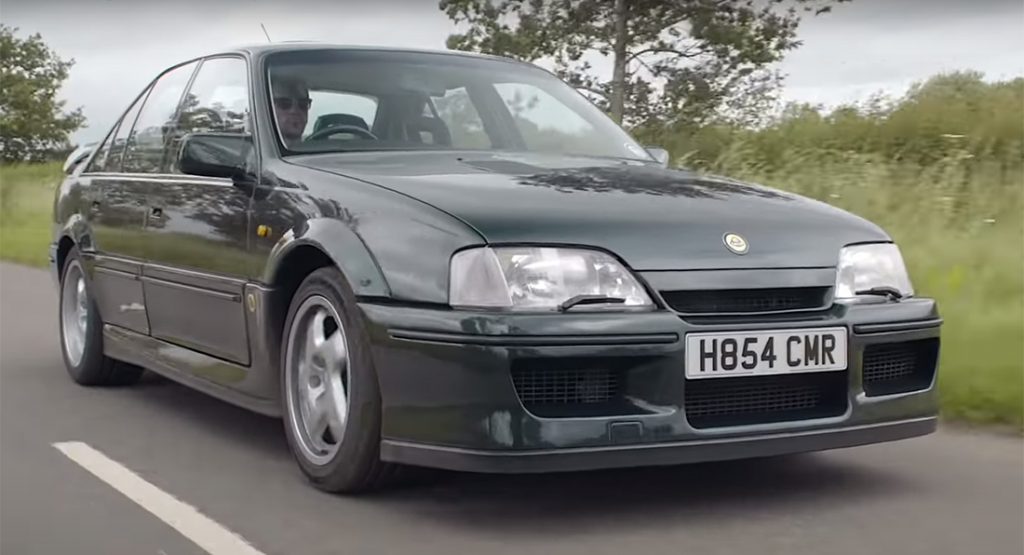Lotus has produced some of the most well-revered performance cars ever, and although the Lotus Carlton was a cooperation with Vauxhall/Opel, it remains to this day a pretty fast car.
Built between 1990 and 1992, the Carlton was based on the Vauxhall Carlton/Opel Omega A sedan and was also known as the Lotus Omega. Although Opel initially planned to build 1,110 cars, the recession of the early 1990s as well as its high price meant that only 320 Carltons and 630 Omegas were made.
Lotus worked hard to improve the vehicle’s performance, so much so that it was one of the fastest production cars of its time. As this review from The Supercar Driver details, modifications started with an upgraded 3.6-liter straight-six that was joined by a pair of Garrett T25 turbochargers. In addition, the engine featured a custom forged crankshaft, forged slipper pistons, new connecting rods and a large intercooler.
Read Also: Lotus Evija’s Rolling Acceleration Will Be From Another Planet
All up, the Carlton had an output of 377 hp at 5,200 rpm and 419 lb-ft (568 Nm) of torque at 4,200 rpm, which were channeled to the rear wheels via the ZF six-speed manual transmission used in the contemporary Corvette ZR1 and a limited-slip differential from the V8 Holden Commodore.
The Carlton had a claimed top speed of 177 mph (285 km/h) – which, for the time, was really fast. However, that figure was actually limited. The reviewer notes that if you hit redline in fifth gear and then change into sixth, the car’s limiter is disabled, allowing it to continue accelerating up to 190 mph (305 km/h). To put that number into perspective, it’s the same as the latest BMW M5 Competition when optioned with the M Driver’s Package…



